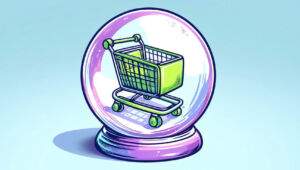“Programmatic DOOH is Rapidly Gaining Favour with Digitally Focussed Marketers”: JCDecaux’s Mark Halliday on Omnichannel Effectiveness
by on 24th Jul 2025 in News

Mark Halliday, Director of Programmatic, JCDecaux UK, joins us to discuss how programmatic digital out of home is helping digital marketers to solve effectiveness challenges in omnichannel campaigns.
In this Q&A, Mark shares insights into how to effectively match marketing goals to channels, best practices for first-party data integration solutions, and appropriate measurement methodologies for better holistic planning and omnichannel targeting.
What are the main challenges for advertisers, agencies, and DSPs regarding omnichannel planning and activation?
Omnichannel planning and activation require embracing something marketers generally try to avoid – fragmentation. However, in this context, fragmentation is good – reaching audiences across multiple screens, devices, platforms, environments, mindsets, and media channels means maximising the impact and effectiveness of your advertising budget.
The inherent challenge with fragmentation is that marketers need to ensure that there is cohesion in the planning process, creative, and measurement to ensure seamless, relevant cross-channel consumer experiences and accurate performance attribution.
Many advertisers still prioritise one-to-one targeting, or worse, they approach all channels as if they are one-to-one channels. The reality is channels such as programmatic DOOH, connected TV (CTV), and programmatic audio reach broad audiences at scale, but are not designed to provide the level of precision targeting and tracking that’s (now) expected of digital channels.
Inconsistent identifiers are also a real problem. Online environments often rely on cookies or alternative IDs, CTV relies on cross-browser cookies, cross-device IDs, and IP addresses. However, none of these identifiers even exist in the programmatic counterparts to traditional media channels like OOH and radio, yet they are a big part of omnichannel planning.
All the above factors augment challenges in attribution. Specifically, marketers might dismiss or understate the value of touchpoints that occurred earlier in a customer journey. A new customer might have discovered a product through a series of targeted DOOH advertising, but they converted through search or a retargeted online ad. Without robust media mix modelling (MMM), the earlier contribution of DOOH is lost. This lost insight may result in a marketer believing that they don’t need to include DOOH in their media plan in the future.
What are the key factors to keep in mind to integrate programmatic DOOH in an omnichannel advertising strategy successfully?
Programmatic DOOH is rapidly gaining favour with digitally focussed marketers. I think there are several reasons for this: firstly, over the past two years we’ve seen a big increase in knowledge about how accessible programmatic DOOH is – it can be bought alongside other programmatic channels in most DSPs. Secondly, the increase in the number of programmatic DOOH case studies available has shone a light on how programmatic DOOH can improve the performance of online campaigns. For example, Dell saw a 2x increase in CTR on high-impact and pre-roll ads and a 74% video completion rate when combining programmatic DOOH with online and mobile. And from a sales perspective, Maltesers Easter Bunnies saw a 3.4% sales uplift when combining programmatic DOOH and online video, versus the 2% benchmark for online video only.
OOH is proven to have a multiplier effect on other channels. The fact it offers high attention, is a quick coverage builder, and is perceived to be the most trusted media channel by consumers means that programmatic DOOH as part of an omnichannel programmatic campaign is likely to see increased click throughs, drive longer view/listen through rates and will likely see a reduction in cost-per-acquisition.
Now we’ve overcome accessibility and knowledge hurdles, planners and buyers are embracing the data and insights available to them to plan media (including data from previous campaigns) and manifest what is missing. Traditional OOH/DOOH can be planned and bought independently without negative consequences. In contrast, programmatic DOOH should (almost) always be planned, activated, optimised, and measured alongside other programmatic channels.
There are many media planning challenges that DOOH can solve through either direct or programmatic buying. However, when thinking specifically about whether programmatic is the best option marketers need to consider whether their campaign would benefit from the unique capabilities that programmatic offers: data-driven activation (on/off), in-flight optimisation (upweighting/down weighting budgets and bids by location, time of day, sales performance, or channel performance), and dynamic creative optimisation (DCO).
If the campaign would benefit from such flexibility appropriate measurement needs to be put in place. This could include footfall attribution, performance of other channels vs. benchmarks when programmatic DOOH is not active, sales, brand awareness, and purchase intent.
There are other factors that contribute to success to, as identified in our recent research in partnership with MTM. These include ensuring that the creative is optimised for OOH, fully utilising the data-driven capabilities of programmatic DOOH (i.e. first-party data integration), and collaboration across creative agencies, media agencies, demand-side platforms (DSPs), measurement providers, and media owners.
Are there any new trends in the programmatic DOOH landscape you expect to see taking off in the near future?
I think DSPs will play a key role in shaping the future of programmatic DOOH over the next year. From a measurement perspective, I think we will see more DSPs and measurement platform partnerships that result in unified delivery and performance data fully integrated. This will result in activation, measurement, and reporting conducted through a single interface.
Additionally, I think we will see an increase in investment in real-time data integrations for campaign activation and creative optimisation, e.g. live first- and third-party data for targeting and optimisation and real- or near-real time performance data (i.e. impression delivery, audience impact, and sales). This would enable better in-flight campaign optimisation across all channels. This is an area that will require meaningful collaboration between DSPs and media owners to ensure that all data points are seamlessly integrated and synchronised consistently.
If you want to learn more about programmatic DOOH visit the JCDecaux Programmatic Intelligence Hub or click here to discover the Seven Key Factors to Success in programmatic DOOH.
DOOHMarketingOmnichannelOOHProgrammatic








Follow ExchangeWire